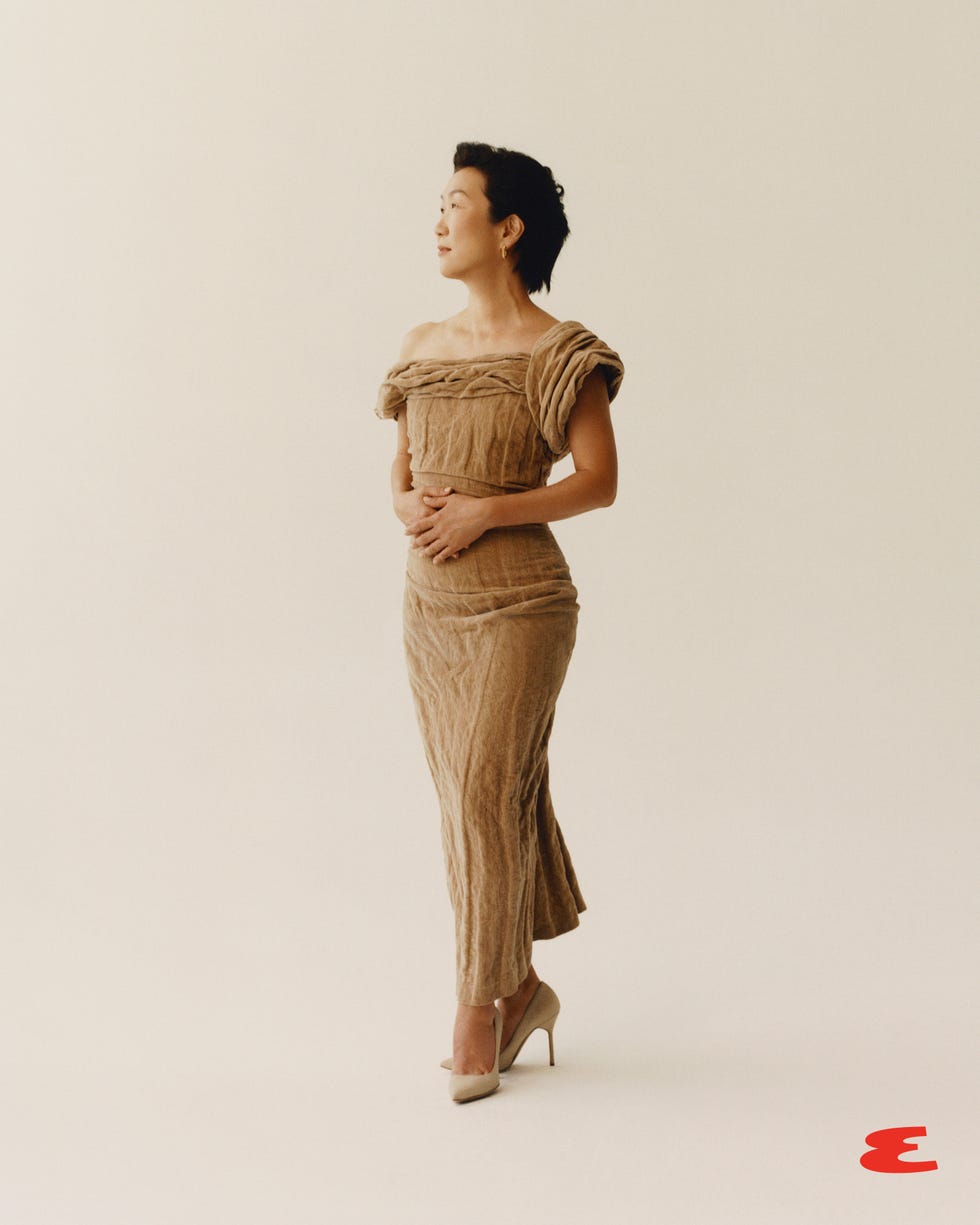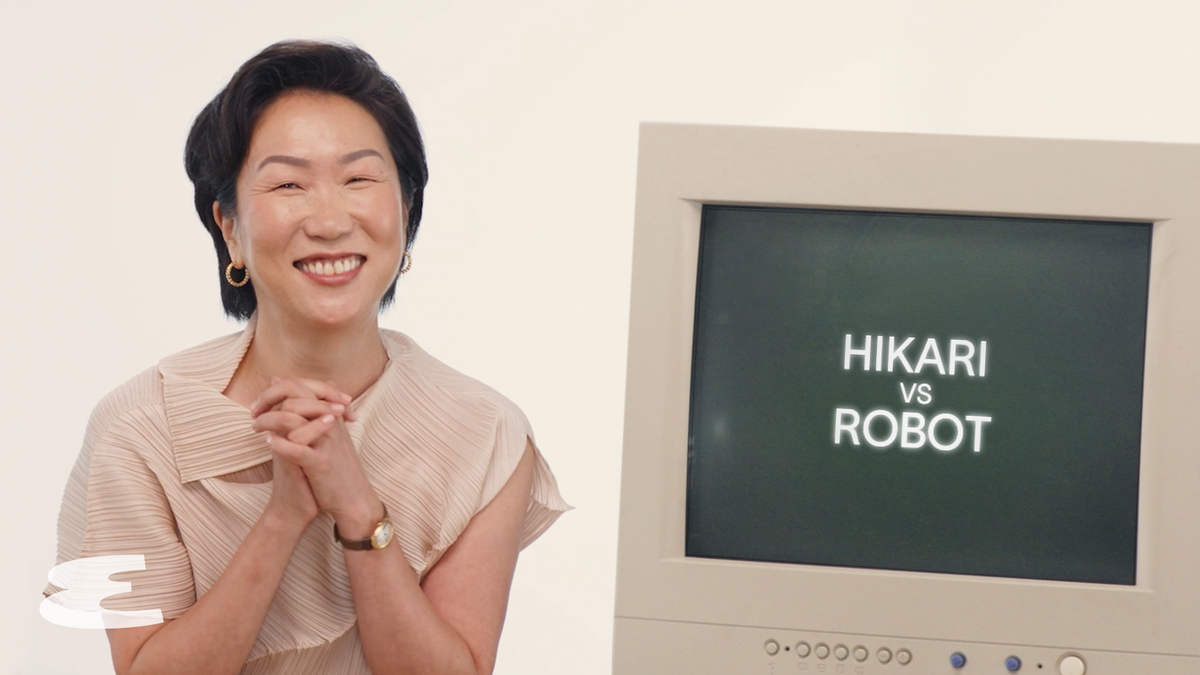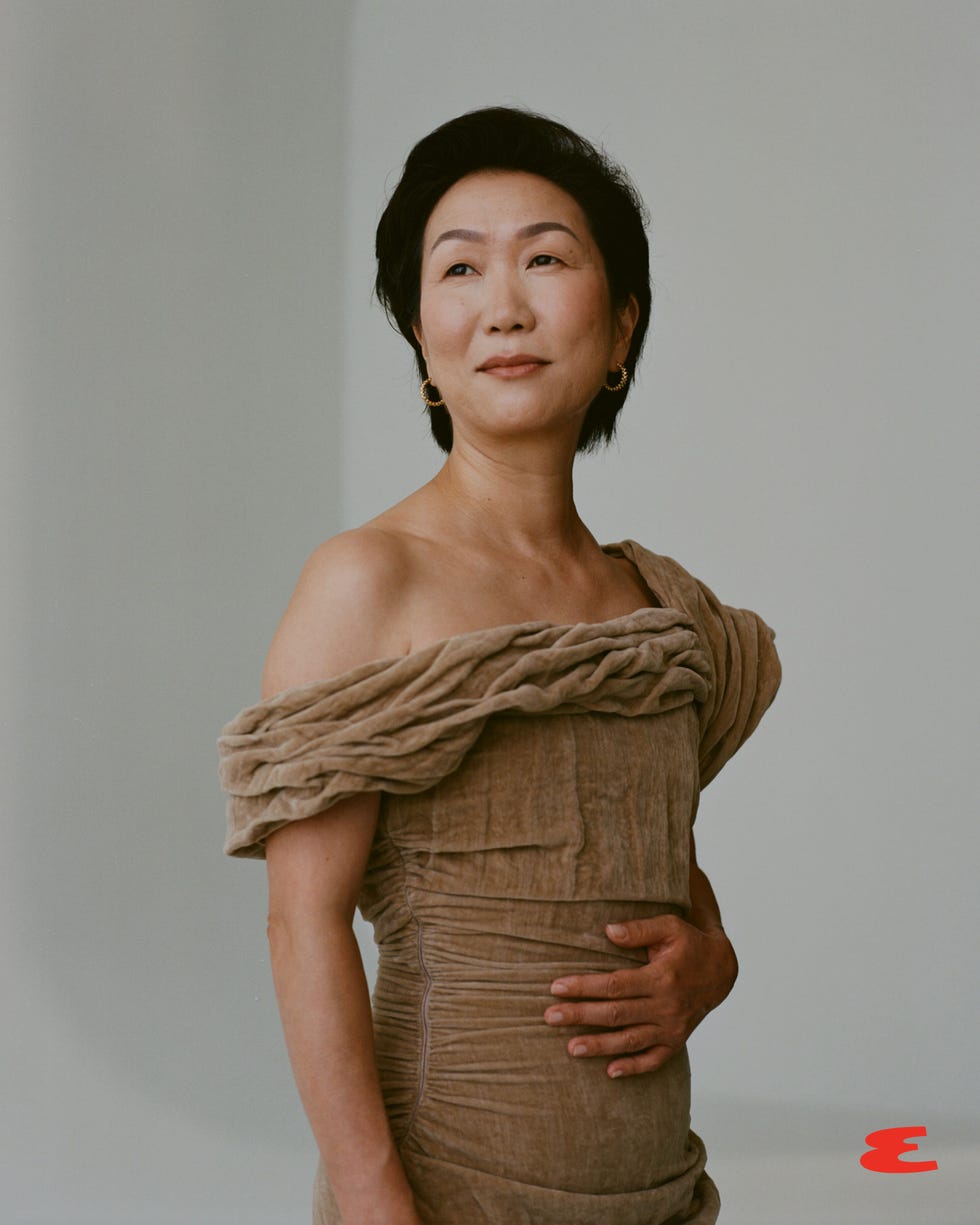Her Name is Hikari and This Is Her Destiny


Dress by Tory Burch. Pumps by Manolo Blahnik. Clash de Cartier earrings by Cartier.
She still seems out of breath as she enters the room. For a minute, she has trouble downshifting into one-on-one interview mode. She’s a tornado of energy—bright energy. She apologizes for being late even though she’s right on time. She’s spent every minute of this gorgeously sunny Los Angeles afternoon in a dark, air-conditioned editing suite. Her eyes are eager and alert behind stylish wire-rimmed frames. They take a minute to adjust to the glaring blast of sunlight in the room. She is dressed in a white linen shirt unbuttoned just enough to show off a funky, chunky necklace. She’s wearing a brown fedora. She pulls it off.
She is forty-eight years old. She tells me to ask her anything. “What you see is what you get.” She exudes the warmth and sincerity and excitement of someone who is finally seeing a distant, long-held dream—one that seemed as unlikely to a kid growing up in Osaka, Japan, as visiting Neptune—come to fruition.

Her name is Hikari. Well, technically the name on her birth certificate is Mitsuyo Miyazaki, but even armed with that information you still probably don’t know who she is. She realizes this. But she also knows that it may all be about to change when her new dramatic comedy, Rental Family, hits theaters in November. If you’re going to see just one movie about an expat American actor (Brendan Fraser) working for a Japanese service that rents out friends and family members for social situations, this should be the one.
There are things you ought to know about her. Her father worked in a metal factory pressing auto parts for Toyotas and Hondas. He left when she was eighteen months old. She was told that he was dead. He was not dead. Her mother had a tea shop. She also fixed umbrellas and took in dry cleaning and sold insurance. When Hikari was six or seven, she was jumping rope outside her house. A nosy old woman told her that her father was alive and living with another woman. She didn’t believe it until her mother confirmed that it was all true. She asked her mother who he was. Her mother pointed to the television and said the famous man on TV was her father. A year later, she discovered that the famous man on TV was not her father. She would meet her real father when she turned thirteen. He was sitting in their living room one day when she came home from school. She knew it was him before anyone said anything. She could tell by looking at his fingernails. They were round and inelegant. They were exactly like hers.
She first came to America as a high school exchange student. She was expecting to study in New York or L.A. They sent her to Utah. Not even Salt Lake City. Small-town Utah. She hadn’t mentioned her plans to her mother until she needed the $10,000 check to pay for the year abroad. By then she was already packed. She was itching to get far away from the culture she grew up in—a culture in which women traditionally had to “suppress themselves and do what they’re told to do.” Her ambitions were too big to play by those rules. “I just wanted to get out.”
She remembers the first yellow school bus she saw in Utah. She recalls that it looked exactly like the ones in Steven Spielberg movies. At school, she saw cheerleaders for the first time. She couldn’t believe they existed in real life. When the school year was over, she returned to Japan with a suitcase full of vintage clothes, which she turned into a short-lived business. After nine months, she knew she needed to get the hell of out Japan and get back to the U.S. “When I came back, my heart was singing and dancing.”

Dress by Tory Burch. Clash de Cartier earrings by Cartier.
She has always been drawn to making art. As a kid she sang in the school chorus. She painted. She danced. She acted. Later, at college in Utah, she studied theater and fine arts. Afterward, she moved to L.A. She paid the rent by waitressing at the House of Blues on the Sunset Strip. She struck up a friendship with one of her customers: Stevie Wonder. He called her on her thirtieth birthday and sang “Happy Birthday” to her. She was drunk and taking out the garbage when he rang. She auditioned for acting gigs. She popped up in a commercial for Coke Zero, dancing on the beach in the background. She danced in a George Michael video too. She worked as a photographer shooting hip-hop artists. They liked her because she had a giant Afro and because she saw things differently. She also worked as a tour guide in Las Vegas. She liked to take Japanese tourists to drive-in wedding chapels and abandoned hotels scheduled for demolition. “I liked spooking them out.” Then she got into USC film school.
She’d first fallen in love with movies while watching Hayao Miyazaki cartoons on television as a kid. She liked how he always had strong female protagonists. Despite their shared last name, they are not related. Sometimes she tells people that he’s her father. Later, she discovered Hollywood. E.T. The Goonies. Stand by Me. She started messing around with her grandmother’s unused video camera at a young age. She moved on to 8mm, then 16mm. She was in love.
A decade ago, at the start of her directing career, she changed her name to Hikari. She says the name means “enlightenment” or “bright energy.” She also likes it because it’s easy for Americans to pronounce and remember (hih-CAR-ee). She’s made four short films, all of which are stunning and utterly original. She directed two episodes of Michael Mann’s Tokyo Vice, and then she directed Ali Wong and Steven Yeun in three episodes of Netflix’s Beef, including the pilot. People in the industry began to notice her. They felt the bright energy radiating from her work. In 2019, she directed her debut feature, a fantastical drama called 37 Seconds about a woman with cerebral palsy who dreams of becoming a manga artist. It won festival awards in Germany, Italy, and Japan.
A few years ago, her writing partner, Stephen Blahut, showed her an article about a rental-family service. It’s an idiosyncratic aspect of Japanese culture with roots dating back to the 1600s. Actors pretend to be a client’s recently deceased family members, role-playing them back into existence. It helps with grief and the healing process. Along with the story of her AWOL father, this became her new film’s inspiration. While she was working on the script, she happened to see Brendan Fraser in The Whale. She thought, That’s my guy. She says she just knew. Like when she looked at the fingernails of the strange man in her childhood living room and knew it was her father.
She says directing is “the purpose of my existence.” The words sound lofty, hyperbolic. But coming from her you believe them. The directors she loves—Miyazaki, Spielberg—changed her life. Now she hopes to return the favor to the people who come to see her new movie. Studios and producers are calling to meet with her. She says she always knew it would take a long time to get where she is right now. But she always knew she would get there. She says “it’s all finally happening.”
Her name is Hikari. It’s a name that’s easy to pronounce and remember.
Story by Chris NashawatyPhotographed by Micaiah CarterStyled by Chloe HartsteinGrooming by Jenny Sauce using Orveda Skincare and OribeSet Design by Michael SturgeonTailoring by Yana GalbshteinVisual Director: James MorrisEntertainment Director: Andrea CuttlerVideo Director: Amanda KabbabeVideo Senior Producer: Brian Murray-RealDirector of Photography: Alvah HolmesAssociate Cinematographer: Jay AguirreVideo Producer: Ali Buchalter
Video Editor: Jeff Sharkey
esquire




